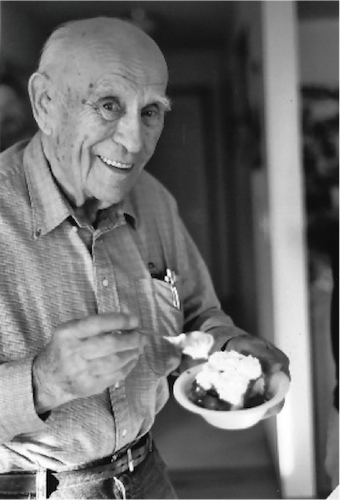It was a spring afternoon, and I was driving by myself on I-35 from Kansas City to Southern Iowa to see my granddad. Granddad’s health had been deteriorating, and I felt compelled to visit him, wondering if this might be the last time. As I drove along the highway, I imagined when I arrived I would see Granddad lying in his bed struggling to move, breath, and communicate. This was the story I was telling myself. As I exited the interstate and made my way through the country gravel roads, I became a little nervous thinking about Granddad’s possible condition and how I might respond. As I made the last turn and pulled into the driveway, I witnessed a scene that is embedded in my mind forever. It was Granddad sitting on his riding lawn mower mowing the front yard. “What?” I thought. This is not the story I had created in my mind. “How is this possible?” I wondered. As I got out of my car, the first thing I said was, “What are you doing? I didn’t expect to see you out here mowing the lawn.” His response is tattooed on my heart. “If you’re going to be living, you might as well live.” That day Granddad could get on his mower, and that was living.
Fiction or Non-Fiction
Internal stories are the narratives that we communicate to ourselves. Going back to one of the first categorization we learned as children about stories is determining if the story is fiction or non-fiction. A fiction story is imaginary and made up. A non-fiction story is based on actual events and facts. We often make up fictitious stories based on our past experiences, preconceived notions, firm beliefs, and predetermined expectations. The story I told myself about my granddad as I was driving is a perfect example. My preconceived notions and predetermined expectations told me what to expect. I was completely wrong. Think about how often we make up stories, and these fictitious stories drive our emotions and behaviors which impact the people around us.
Check Your Story
The challenge for us is to check our story. Is the story I am telling myself fiction or non-fiction? This can be difficult because often we want to believe the fiction story. However, it is necessary to pause and ask ourselves, “What is really happening?” This is a skill of a confident and mindful leader.
Practice
At the beginning of your next meeting or interaction with someone, check out the book in your mental library, read it, and determine if it is fiction or non-fiction.
This is Part 2 in the Stories series. Read Part 1 HERE.




